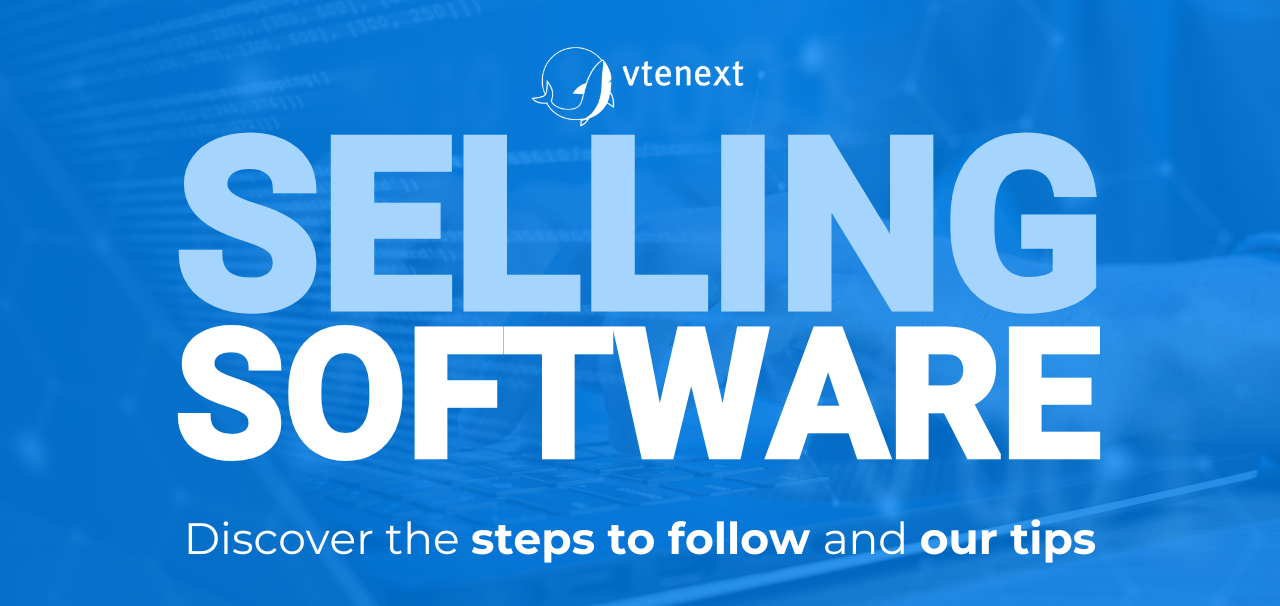Every business, large or small, reaches a point where it must seek new solutions to manage more complex processes, improve productivity or remain competitive. Increasingly often, these solutions take the form of software, capable of automating activities, reducing errors and creating new opportunities for growth.
The sales process becomes an opportunity to offer practical solutions to real problems. In fact, selling software means interpreting market needs and translating them into a clear, accessible and valuable offer. The key difference lies in the ability to guide companies in choosing the most suitable solution for their future through an effective sales strategy specifically designed for this kind of product.
Understanding the needs of potential customers
Companies do not purchase software for the technology itself, but for its ability to solve practical problems, optimize internal processes, or generate new business opportunities. Understanding these expectations means going beyond demographic data or sector statistics, building a broader framework that includes objectives, operational challenges and growth prospects.
Analysis can involve different methods of gathering information. On the one hand, quantitative tools such as surveys, market research and trend analysis allow us to outline general scenarios and identify recurring patterns. On the other, qualitative methods such as direct interviews, focus groups and observation of user behavior help to capture nuances that are difficult to detect with numbers alone.
This kind of approach allows potential customers to be segmented into distinct groups, each characterized by specific needs and priorities. This allows us to refine the commercial message and, at the same time, guide product development toward truly relevant features. In this process, the software is not presented as a standard package but as a tailor-made solution for a specific context.
Analyze the competition and leverage your strengths
Software is rarely launched into a market without alternatives. Every digital solution coexists with similar, often well-established products already known to potential customers. For this reason, even before proposing new features, it is essential to observe the competitive landscape: how competitors communicate, what experiences they offer, which segments they cover and which they overlook. Only through this mapping can you identify the space where your product can stand out.
An important aspect is recognizing not only what the competition offers but also what it leaves out. Strengths often emerge precisely in these gaps: features that have not yet been developed, more responsive customer support, or a more intuitive user experience. Leveraging these elements means turning them into clear, tangible benefits that help potential customers perceive the difference.
Effectively communicating your strengths requires a coherent and benefit-oriented narrative. Highlighting a simpler interface is not enough; it needs to be shown how this feature reduces staff training time or facilitates internal adoption. Similarly, a flexible pricing model is not just a commercial detail, but an opportunity for companies to adapt costs to the growth of their business.
Defining an effective pricing strategy
Two digital solutions, despite offering the same functions, can experience very different outcomes when offered with different pricing strategies. It’s not just a question of numbers: price immediately communicates a perception of value, influences customer trust and defines the product’s position in the market. For this reason, designing an effective pricing structure requires attention not only to internal costs but, above all, to how buyers perceive the investment.
The value-based model is one of the most widely adopted today: pricing is determined based on the tangible benefits the software delivers, such as time savings, process efficiency or faster scalability. This approach is often combined with flexible models (such as subscriptions, per-user or pay-per-use plans) that allow companies to align their investment with their growth stage and actual product usage.
Price competition remains a useful reference point, but it is not enough. In some cases, a premium positioning can even strengthen the perception of quality; provided it is backed by tangible features such as continuous updates, dedicated support, or advanced security features.
Create a marketing and sales plan
No matter how technically advanced it is, software can hardly gain traction in the market without a well-structured promotional strategy. Marketing and sales should be a continuous process that supports the product from the very beginning, shaping its perception and driving adoption. An effective plan starts with a clear definition of the target audience and the selection of the most suitable channels to reach them, whether through digital campaigns, industry events, or content marketing initiatives.
Generating qualified leads is at the heart of the process: it is not enough to attract attention, it is necessary to engage truly interested decision makers, nurture them with relevant content and guide them toward the purchasing phase. Techniques such as segmented email marketing, product demo webinars, and free trials can build trust and lower barriers to entry.
At the same time, the sales team must be equipped with the right tools to present the software not as a set of features, but as a real solution to specific business challenges. This includes creating personalized materials, case studies, and testimonials that add credibility and depth to the promotional message.
The plan doesn’t end with the signing of the contract: the post-sales phase, which includes onboarding, customer support, and regular updates, becomes an integral part of the marketing strategy. In fact, a satisfied customer not only renews the license, but often becomes an advocate for the product, helping to sustain a virtuous cycle of reputation and new business opportunities.
Launching the product and monitoring its results
Every software product goes through two distinct stages: the development phase, involving tests, revisions and adjustments, and the moment when it finally meets the public. It’s at this stage that the expectations built during development are confronted with the real experience of users. The gap between what was imagined and what is perceived represents the true test of the project.
To manage this transition it is necessary to build a launch plan that makes the advantages of the product clear and encourages users to try it. The tools you choose, such as a dedicated landing page, product demo webinars, or social media campaigns, are important, but so is the way they build trust and reduce uncertainty.
Immediately afterwards, the monitoring phase begins: tracking usage data, access frequency, and user feedback helps determine whether the software truly integrates into companies’ operational routines. A thorough analysis of these signals makes it possible to adjust communication, build on strengths, and quickly correct any weaknesses.
In this sense, market entry is more than a single event: it marks the beginning of a continuous cycle of dialogue and improvement, where results are measured not only by immediate sales but by the ability to build trust and long-term relationships.
Customization & Automation
Every company that adopts software brings with it specific needs, shaped by its structure, the industry it operates in and its growth objectives. Offering a standardized product can be limiting unless it is paired with the ability to adapt it to the context in which it will be used. Customization directly impacts perceived value: configurable interfaces, additional modules and workflows modeled on the real needs of the organization encourage faster adoption and lasting satisfaction.
Alongside customization, automation is another key element. Automating repetitive tasks or complex processes helps reduce errors, free up internal resources and focus efforts on higher-value, strategic activities. Features such as smart notifications, integrations with other systems and predictive algorithms turn software from a simple tool into a true operational partner.
The combination of customization and automation creates a virtuous cycle: on one hand, the product adapts to the company’s context, while on the other, it evolves alongside it, anticipating needs and reducing friction. This synergy helps increase retention and lowers the risk of replacement by competing solutions, as the software becomes an integral part of how the organization operates.

